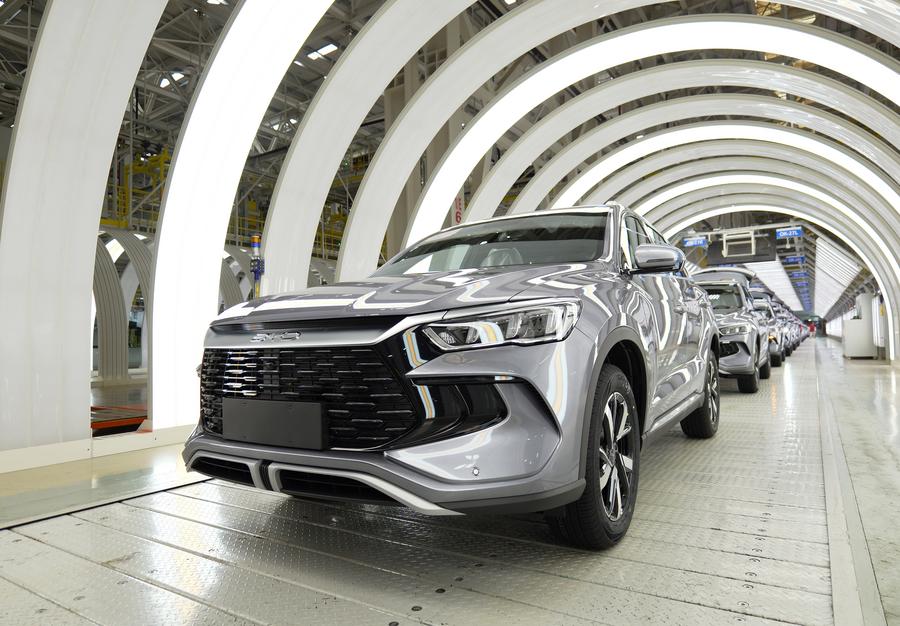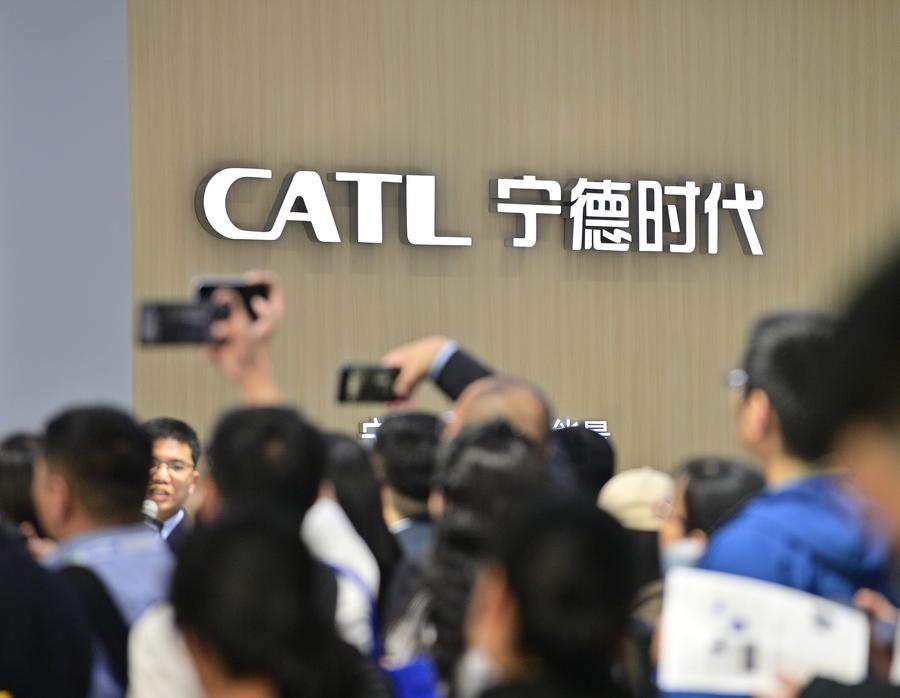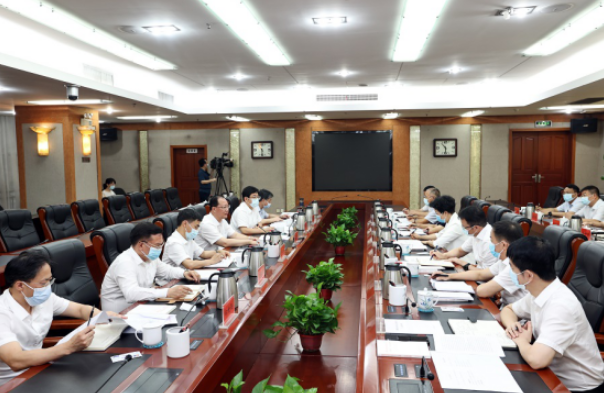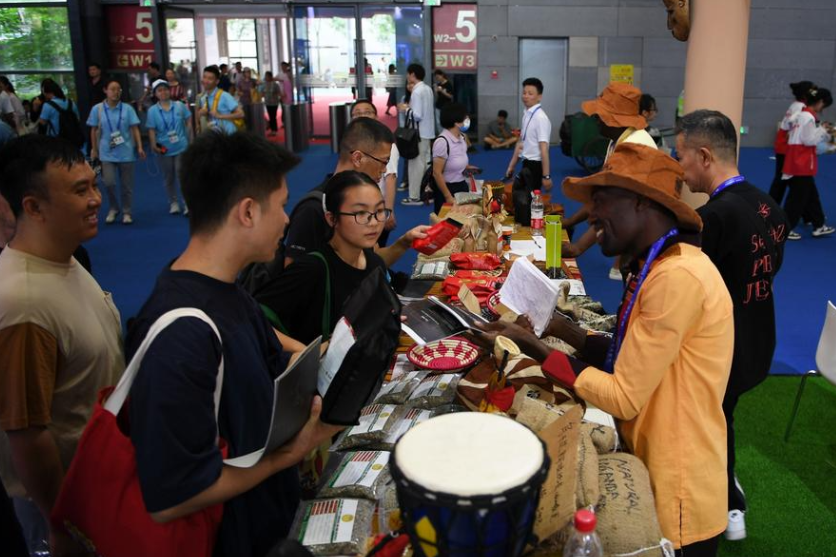* China's burgeoning new energy sector stands as a beacon of technological prowess and a pivotal force in the global push for sustainable development. * In recent years, China has been substantially reducing subsidies within the new energy vehicle (NEV) sector. In stark contrast, nations like the United States, Britain, and France extend robust subsidy support for electric vehicles. * China's export of new energy products has emerged as a crucial pillar supporting global economic expansion and price equilibrium. China's pivotal role in driving energy transitions, fostering economic growth, and enhancing livelihoods globally cannot be overstated. * China's new energy sector is not just a source of domestic growth but also a catalyst for job creation globally, as firms extend their reach through overseas plant establishments and collaborative ventures. BEIJING, April 28 (Xinhua) -- Recent claims from some Western countries labeling China as having "overcapacity" lack substance and coherence. Upon closer examination, the following facts debunk such rhetoric and reveal the truth. China's advanced production capacities in the new energy sector are in high demand globally, providing a diverse range of consumer products while serving as a pivotal player in the fight against climate change. Its competitive edge has been honed through diligent efforts and genuine expertise, rooted in market competition, innovation, and entrepreneurship. These strengths open up significant opportunities for mutually beneficial cooperation. Fallacy: China's new energy sector faces overcapacity. Fact: China's burgeoning new energy sector stands as a beacon of technological prowess and a pivotal force in the global push for sustainable development. Contrary to prevailing notions of overcapacity, the critical deficit lies in the dearth of new energy infrastructure worldwide. On a global scale, the shortfall in new energy capacity looms large. Projections from the International Energy Agency indicate a staggering demand surge, with new energy vehicle sales anticipated to soar to 45 million by 2030, a fourfold increase from 2022 levels. Last year's G20 Leaders' Declaration underscored the urgency, calling for a tripling of renewable energy capacity by 2030. China's new energy vehicle sector bears testament to this burgeoning demand, with both production and sales witnessing sustained and robust growth in recent years. In the first quarter, profits within China's automotive manufacturing sector surged by an impressive 32 percent year-on-year. Such performance underscores the dynamism of the nation's electric vehicle segment. Fallacy: China's industrial policy twists global market. Fact: China's utilization of industrial policies is characterized by equity, inclusivity, and strategic alignment. Across the globe, industrial policies serve as a staple tool to bolster specific sectors, with the World Trade Organization (WTO) permitting their implementation while mandating adherence to non-discriminatory principles. China's ascendancy in the realm of new energy products is underpinned by a constellation of factors, heralding a competitive edge. Key among these are early investments in research and development, the establishment of a robust industrial ecosystem, access to a sprawling domestic market, the rapid evolution of infrastructure, and a vibrant marketplace teeming with competition across state-owned, private, and foreign enterprises, and rapid technological iterations. The success narrative of Contemporary Amperex Technology Co., Limited (CATL) epitomizes this trajectory, underscored by its pioneering technology and leading market position, forged through a relentless pursuit of innovation and strategic foresight. In 2023, CATL's commitment to research and development materialized in an investment totaling approximately 18.4 billion yuan (about 2.59 billion U.S. dollars). Notably, the company has consistently maintained the industry's highest growth rate in patent applications. In recent years, China has been substantially reducing subsidies within the new energy vehicle (NEV) sector. In stark contrast, nations like the United States, Britain, and France extend robust subsidy support for electric vehicles. According to Liu Hongzhong, vice director of the China Society of World Economics, the landscape of industrial policies has undergone a notable shift since 2008, with developed nations rolling out a plethora of initiatives. However, many of these, such as the U.S. Inflation Reduction Act, bear the hallmarks of discriminatory practices, often wielded as geopolitical instruments under the guise of risk mitigation. Critics argue that the United States has long been a global leader in the use of industrial policies and government subsides. Its extensive subsidies, coupled with clauses tinged with discrimination, contravene established market and international trade norms, thereby distorting the global industry chains. Notably, the U.S. is providing a staggering 52.7 billion U.S. dollars for semiconductor manufacturing subsidies and 369 billion dollars in tax incentives and subsidies for clean energy industries, including electric vehicles. Fallacy: China's new energy products impact global economy. Fact: China's export of new energy products has emerged as a crucial pillar supporting global economic expansion and price equilibrium. China's pivotal role in driving energy transitions, fostering economic growth, and enhancing livelihoods globally cannot be overstated. Against a backdrop of sluggish global growth and heightened inflationary pressures in recent years, Chinese products have stood out for their hallmark attributes of quality, efficiency, and cost-effectiveness. This has translated into tangible support for stabilizing global industrial and supply chains, effectively bolstering the availability of goods worldwide and mitigating inflationary strains. Despite the competitive pricing of China's new energy exports, they fall within acceptable trade parameters and do not meet the technical definition of dumping. As exports increase, the prices of China's new energy vehicles also increase. Li Dawei, a researcher at the Academy of Macroeconomic Research, emphasized that these products maintain prices aligned with their inherent value, underscoring China's adherence to fair trade practices. China's reach in the wind power and photovoltaic markets extends across more than 200 countries and regions, significantly driving down the global cost of clean energy adoption. Furthermore, collaborative endeavors in green energy ventures with over 100 nations have facilitated greater accessibility and affordability of local electricity supply. China's advanced capacity contributes a lot to the world's economic development, greatly enriches the global supply and provides more choices for consumers. Fallacy: China's new energy sector threatens jobs of other nations. Fact: China's new energy sector is not just a source of domestic growth but also a catalyst for job creation globally, as firms extend their reach through overseas plant establishments and collaborative ventures. However, it is some other countries' protectionist policies, rather than such initiatives, that pose a threat to employment prospects. Leveraging their technological prowess, Chinese new energy enterprises have intensified international collaborations, setting up production facilities in various countries such as Thailand, Hungary, and Germany, thereby generating thousands of employment opportunities. For instance, CATL, a leading battery manufacturer, commenced cell production at its inaugural overseas plant in Germany in December 2022, expected to create up to 2,000 new jobs locally. Moreover, with a substantial investment of 7.34 billion euros, CATL is in the process of constructing a production hub in Hungary. The sharing of technology from CATL has also spurred job growth elsewhere, exemplified by U.S. automaker Ford's establishment of a factory in Michigan for manufacturing lithium iron phosphate batteries. This venture is anticipated to employ approximately 1,700 individuals. Meanwhile, Chinese enterprises' overseas investments in clean energy encompass diverse domains like wind power, photovoltaic generation, and hydropower. In the first three quarters of 2023, Chinese firms committed an impressive 3.8 billion U.S. dollars to overseas renewable energy projects, surpassing the combined sum of the preceding two years, according to a report issued at a forum on South-South cooperation in renewable energy held in late March. Such projects also mean tens of thousands of job opportunities as well as boosting the industrial development of partner countries. However, the European Union's anti-subsidy measures, threatening punitive tariffs on electric vehicles imported from China, have stirred apprehension. Hildegard Mueller, president of the Association of the Automotive Industry in Germany, cautioned that the potential trade conflict resulting from these measures may imperil German jobs reliant on business ties with China. The world doesn't want less of China's capacity, but wants more funding and products to speed up energy transition and reduce poverty. Just as shown by the ongoing 2024 Beijing International Automotive Exhibition, China's new energy enterprises will advance innovation and develop more high-quality products and services to the world. (Reporting by Li Laifang, Zhang Zhongkai, Li Baojie; Video reporters: Zhao Bo, Zhang Wen; Video editors: Li Ziwei, Zhao Xiaoqing, Zhang Yichi)
Fallacies and facts about China's "overcapacity"
Editor:谭婕倪
Source:Xinhua
Updated:2024-04-29 16:42:21
Source:Xinhua
Updated:2024-04-29 16:42:21
Special
Contact
Welcome to English Channel! Any suggestion, welcome.Tel:0731-82965627
lisl@rednet.cn
zhouqian@rednet.cn















